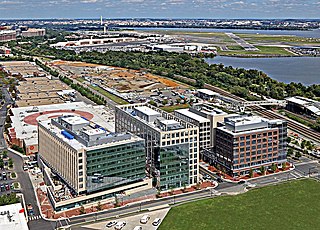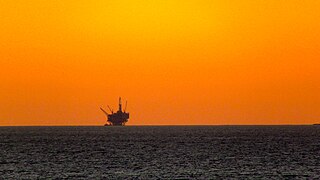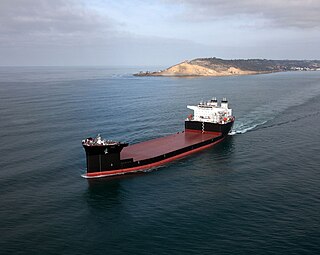
The technical meaning of maintenance involves functional checks, servicing, repairing or replacing of necessary devices, equipment, machinery, building infrastructure, and supporting utilities in industrial, business, and residential installations. Over time, this has come to include multiple wordings that describe various cost-effective practices to keep equipment operational; these activities occur either before or after a failure.

An oil platform is a large structure with facilities to extract and process petroleum and natural gas that lie in rock formations beneath the seabed. Many oil platforms will also have facilities to accommodate the workers, although it is also common to have a separate accommodation platform linked by bridge to the production platform. Most commonly, oil platforms engage in activities on the continental shelf, though they can also be used in lakes, inshore waters, and inland seas. Depending on the circumstances, the platform may be fixed to the ocean floor, consist of an artificial island, or float. In some arrangements the main facility may have storage facilities for the processed oil. Remote subsea wells may also be connected to a platform by flow lines and by umbilical connections. These sub-sea facilities may include one or more subsea wells or manifold centres for multiple wells.

HMS Challenger was a Royal Navy diving support vessel, operational from 1984 to 1990.

A floating production storage and offloading (FPSO) unit is a floating vessel used by the offshore oil and gas industry for the production and processing of hydrocarbons, and for the storage of oil. An FPSO vessel is designed to receive hydrocarbons produced by itself or from nearby platforms or subsea template, process them, and store oil until it can be offloaded onto a tanker or, less frequently, transported through a pipeline. FPSOs are preferred in frontier offshore regions as they are easy to install, and do not require a local pipeline infrastructure to export oil. FPSOs can be a conversion of an oil tanker or can be a vessel built specially for the application. A vessel used only to store oil is referred to as a floating storage and offloading (FSO) vessel.

Mighty Servant 2 was a 29,000-ton semi-submersible, heavy-lift ship operated by Dockwise. The ship drew worldwide attention in 1988 for transporting the mine-damaged USS Samuel B. Roberts from Dubai to Newport, Rhode Island.

The Advanced SEAL Delivery System (ASDS) was a midget submarine operated by the United States Navy and United States Special Operations Command. It provided stealthy submerged transportation for United States Navy SEALs from the decks of nuclear submarines for use as an insertion platform for covert and clandestine special operations missions. The ASDS was canceled in 2009 due to cost overruns and reliability issues, after the prototype was destroyed in a fire in 2008. As of 2019, the Navy plans to replace the ASDS with the Dry Combat Submersible, a similar midget submarine being developed by Lockheed Martin.

The Institute for Defense Analyses (IDA) is an American non-profit corporation that administers three federally funded research and development centers (FFRDCs) – the Systems and Analyses Center (SAC), the Science and Technology Policy Institute (STPI), and the Center for Communications and Computing (C&C) – to assist the United States government in addressing national security issues, particularly those requiring scientific and technical expertise. It is headquartered in Alexandria, Virginia.

Very large floating structures (VLFSs) or very large floating platforms (VLFPs) are artificial islands, which may be constructed to create floating airports, bridges, breakwaters, piers and docks, storage facilities, wind and solar power plants, for military purposes, to create industrial space, emergency bases, entertainment facilities, recreation parks, mobile offshore structures and even for habitation. Currently, several different concepts have been proposed for building floating cities or huge living complexes. Some units have been constructed and are presently in operation.

Offshore drilling is a mechanical process where a wellbore is drilled below the seabed. It is typically carried out in order to explore for and subsequently extract petroleum that lies in rock formations beneath the seabed. Most commonly, the term is used to describe drilling activities on the continental shelf, though the term can also be applied to drilling in lakes, inshore waters and inland seas.

A floating wind turbine is an offshore wind turbine mounted on a floating structure that allows the turbine to generate electricity in water depths where fixed-foundation turbines are not feasible. Floating wind farms have the potential to significantly increase the sea area available for offshore wind farms, especially in countries with limited shallow waters, such as Spain, Portugal, Japan, France and the United States' West Coast. Locating wind farms further offshore can also reduce visual pollution, provide better accommodation for fishing and shipping lanes, and reach stronger and more consistent winds.
Offshore concrete structures, or concrete offshore structures, are structures built from reinforced concrete for use in the offshore marine environment. They serve the same purpose as their steel counterparts in oil and gas production and storage. The first concrete oil platform was installed in the North Sea in the Ekofisk oil field in 1973 by Phillips Petroleum, and they have become a significant part of the marine construction industry. Since then at least 47 major concrete offshore structures have been built.

An Expeditionary Transfer Dock (ESD), formerly the Mobile Landing Platform (MLP), is designed to be a semi-submersible, flexible, modular platform providing the US Navy with the capability to perform large-scale logistics movements such as the transfer of vehicles and equipment from sea to shore. These ships significantly reduce the dependency on foreign ports and provide support in the absence of port availability. The class also houses a sub-class variant called the Expeditionary Mobile Base (ESB), formerly the Afloat Forward Staging Base (AFSB).
The Oceanic Platform of the Canary Islands (PLOCAN) is a singular scientific and technological infrastructure (ICTS) aimed to accelerate the development of knowledge and technologies for the responsible and sustainable use of the ocean, in line with the United Nations Sustainable Development Goals and strategy of Blue Growth Strategy established by the European Union. It has been partially co-funded by the European Regional Development Fund (ERDF) under the ERDF Operational Programme for the Canary Islands 2007-2013 within Axis 1 "Development of the Knowledge Economy", priority theme 02, with a co-financing rate of 85%. PLOCAN is financed and managed by a consortium comprising 50% contributions from the Government of the Canary Islands and the Spanish National Government.
Sesam is a software suite for structural and hydrodynamic analysis of ships and offshore structures. It is based on the displacement formulation of the Finite Element Method.
The FORAN system is an integrated CAD/CAM/CAE system developed by SENER for the design and production of practically any naval ship and offshore unit. It is a multidisciplinary and integrated system that can be used in all the ship design and production phases and disciplines. The System collects all the information in a single database. FORAN is mainly focused on the design of:
A semi-submersible naval vessel is a hybrid warship, that combines the properties of a surface ship and submarine by using water ballast to partially immerse and minimize its above-waterline profile, thereby improving its stealth characteristics when in hostile waters. The USS Monitor was an antecedent to such craft with its low-profile deck and gun turret. Russian and North Korean semi-submersible naval vessels evolved from torpedo boats and special forces boats that could partially submerge to perform their missions. The US Navy SEALs use such vessels for clandestine special forces actions. Efforts to embody advantageous surface-ship characteristics into submarines have not been widely adopted.

Ampyx Power was a Dutch company based in The Hague whose aim was to develop utility-scale airborne wind energy systems. The company was founded in 2008 by Bas Lansdorp and Dr. Richard Ruiterkamp.
Ocean development refers to the establishing of human activities at sea and use of the ocean, as well as its governance.












